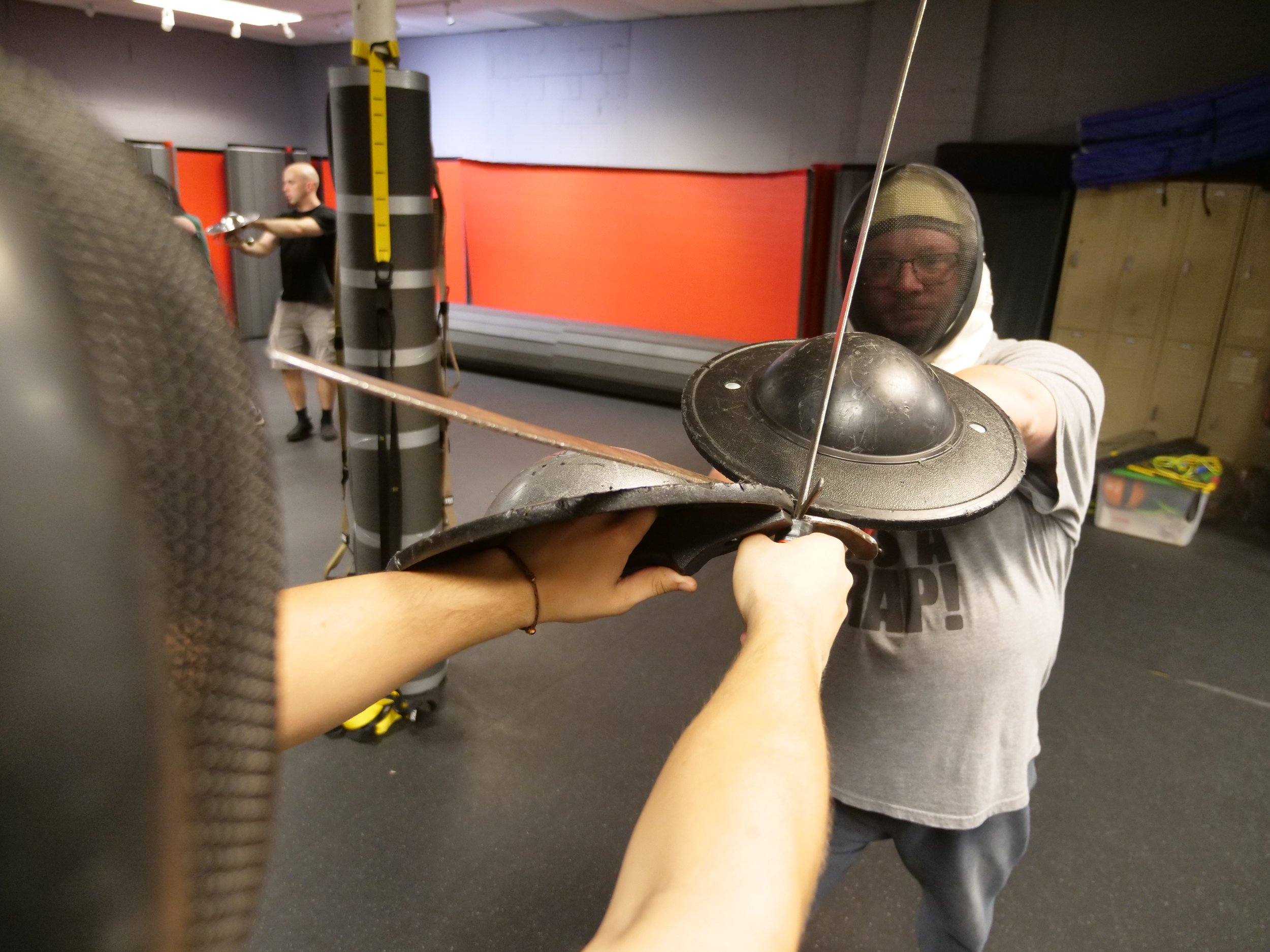
OUR SWORD AND SHIELD CLASSES
Wednesdays at 6:30PM-7:30PM
We have students begin their studies with sword and buckler, learning from the I.33 manuals. This small shield was used throughout the medieval and renaissance period through Europe and Asia as a self-defense tool. The I.33 manual is considered to be one of the oldest sword-fighting manuals in existence from Europe and details multiple techniques of how to use a single-handed sword with a buckler through descriptions and illustrations. We believe that starting with the humble buckler helps to condition students for having both hands occupied and utilizing two different tools at the same time.
Specifically from European history, there is a lack of manuscripts for the many other types of shield combat that may have been used by soldiers and knights. While students begin with sword and buckler, we teach and experiment with these other shield-types through what source material can be found and active drills and sparring.
Sword and shield makes for a dynamic and fun class that keeps the body moving and the mind working. Students will not only get a deep dive into one of Europe’s oldest sword disciplines but get a good workout.
GALLERY


















SWORD AND SHIELD
Almost every culture that has developed swordplay has utilized some kind of shield in combat. From small bucklers for self-defense on the street to the towering scutum used in large formations, the combination of a sharp sword and a protective shield has consistently appeared throughout history.
THE OLDEST STYLE OF FIGHTING
One of the earliest known sword manuals is the I.33 treatise, which offers a detailed guide on dueling with an arming sword and buckler. The buckler, a small, round shield, is held in the off-hand by a central grip, allowing the fencer to use it in conjunction with the sword. Though the illustrations in the manual can be difficult to interpret, many modern practitioners have successfully replicated the techniques through study and practice. The fighting style depicted in the I.33 is fast, technical, and highly nuanced—far more complex than how sword-and-shield combat is often portrayed in movies. Historically, bucklers were used not only on the battlefield but also for personal defense, as their compact size made them easy to carry and quick to deploy, particularly when equipped with a belt clip.
A BATTLEFIELD STANDARD
Larger shields, such as the heater, rotella, and kite shields, were primarily used on open battlefields, where soldiers faced multiple enemies and various types of weapons. These shields were often part of a larger set of gear, specifically tailored to the units that wielded them. On the battlefield, shields served a crucial role in protecting against more than just blades and spears. Soldiers could find themselves under threat from flying projectiles coming from any direction, making shields essential for defense in chaotic combat scenarios.
Most of these larger shields employed a strap system, as opposed to being held by a central grip. This allowed the warrior to brace the shield against their arm, distributing its weight more evenly across the body and providing better coverage. The strap system also helped reduce fatigue, as it minimized the strain of holding the shield out in front of the body with just one point of contact. This method was far more efficient, especially during prolonged combat.




